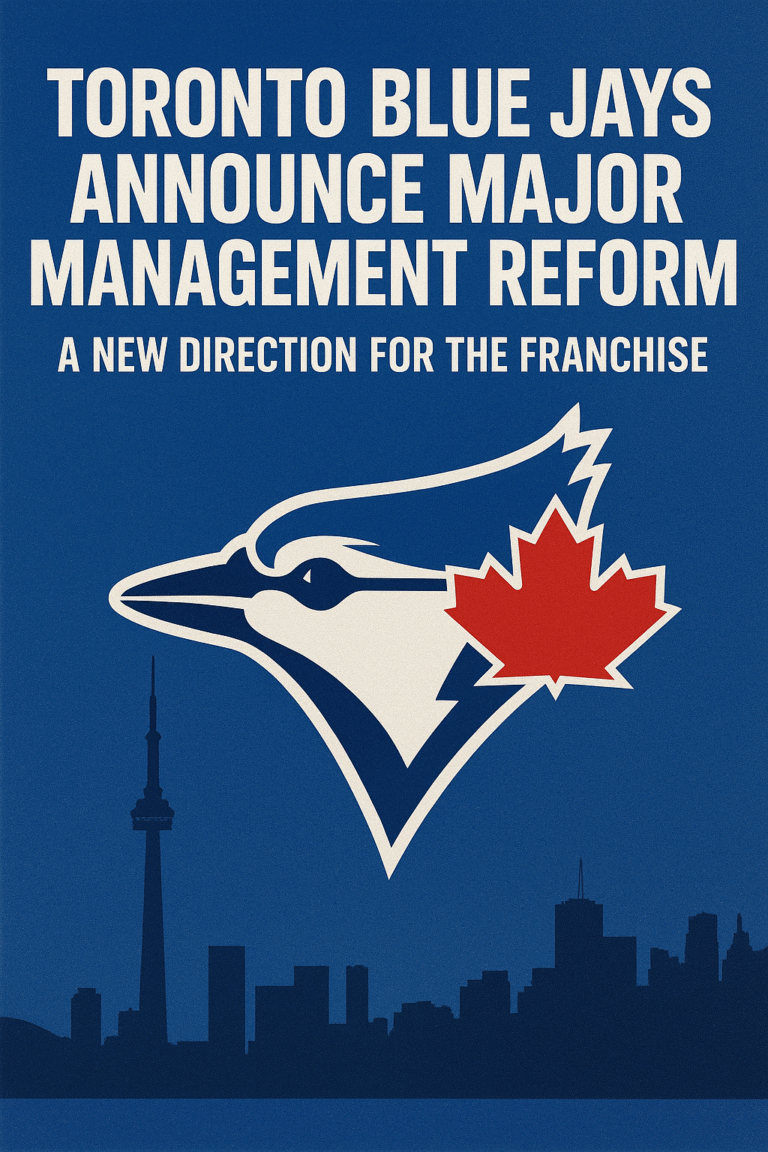Toronto Blue Jays Announce Major Management Reform: A New Direction for the Franchise
In a move that signals the start of a new era, the Toronto Blue Jays have officially announced a sweeping reform of their management structure, aiming to strengthen leadership, improve team performance, and restore the winning culture that once defined the franchise. The decision, revealed in a press conference at Rogers Centre, reflects the organization’s determination to rebuild both on and off the field after a disappointing 2025 campaign.
The overhaul includes significant changes in the front office hierarchy, new appointments in player development, and a strategic shift in how the club approaches analytics, scouting, and player acquisition. According to team president Mark Shapiro, the reform is about “realigning our leadership with the long-term vision of the organization — to build a sustainable, championship-caliber team.”
Among the headline changes is the appointment of a new General Manager, replacing Ross Atkins, who had served in the role since 2015. The incoming GM, whose identity the club will reveal later this month, is expected to bring a modern approach to roster building, emphasizing youth development, data-driven decision-making, and culture accountability. Insiders suggest the Blue Jays are targeting an executive with a strong background in both analytics and player relations — a sign that Toronto is moving toward a more balanced leadership model.
Another key aspect of the reform involves restructuring the player development department. The Blue Jays have struggled in recent seasons to translate minor-league potential into consistent major-league success. The new plan introduces an expanded performance science team, improved training facilities, and closer coordination between the front office and coaching staff. This move is expected to enhance player health, consistency, and adaptability — all critical for surviving the long grind of the MLB season.
Team manager John Schneider, who remains at the helm for now, welcomed the reforms and emphasized the importance of collaboration. “This is a step forward for the organization,” Schneider said. “Change can be challenging, but it’s also exciting. We’re building a structure that supports everyone — from the players to the coaches to the fans who believe in this team.”
Fans and analysts have been quick to react to the announcement. While some supporters have praised the Blue Jays for addressing longstanding issues in leadership and direction, others remain cautiously optimistic, pointing out that management reform must also translate to results on the field. “It’s not just about titles and roles,” said baseball analyst Greg Zaun. “The Blue Jays need a clear identity. Are they rebuilding, or are they chasing a title now? The reforms have to answer that question.”
The changes come at a critical moment. After missing the postseason and finishing near the bottom of the AL East standings, the Blue Jays faced mounting pressure to respond. Injuries, inconsistent hitting, and bullpen struggles have plagued the team for two consecutive seasons. By reforming its management structure, the organization hopes to create a clearer chain of accountability and a stronger foundation for long-term success.
In addition to leadership changes, the team announced plans to expand its community engagement and fan outreach programs, aiming to reconnect with a loyal fan base that has grown restless. The Blue Jays’ ownership group, Rogers Communications, reaffirmed its commitment to investing in the club’s future, both financially and strategically.
As the Blue Jays prepare for the upcoming offseason, this reform marks more than just a change in personnel — it represents a philosophical shift. The message from the front office is unmistakable: complacency is no longer acceptable. The Toronto Blue Jays are determined to reclaim their place among baseball’s elite, and this management reform is the first step toward that renewed vision.
For fans across Canada, hope is rekindled that the Blue Jays can once again soar — not just as a team, but as a symbol of resilience, renewal, and championship ambition.
